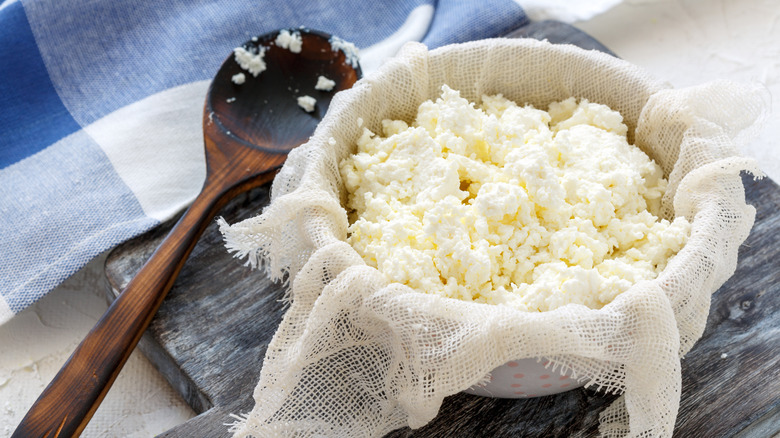Your Sous Vide Is The Easy Way To Make Fresh Cheese
Around 4,000 years ago (so the legend goes), a merchant from Arabia was traveling across the desert. He had stored some milk in a sheep's stomach pouch, and as the bright sun beat down and the milk met the rennin, an enzymatic membrane in the stomach, both curds and whey were formed to create cheese. Since that (likely untrue) origin, though, the cheesemaking process has gotten much more complex. It can involve all sorts of equipment, acids, cultures, and enzymes before you get any product even resembling cheese. However, the sous vide method of making fresh cheese hearkens back to the simplicity of that merchant and his desert dairy.
In place of a sheep's stomach pouch, you have a vacuum-sealed bag, and in place of the hot desert sun, you have a temperature-controlled water bath. Whether you're making mozzarella or whipping up ricotta cheese from scratch, cheesemaking can be an engaged, hands-on practice of biotechnology; you're spending a great deal of time making sure it stays at an exact temperature, then stirring and watching to ensure that the right chemical reactions occur and nothing burns. Sous vide cheesemaking, on the other hand, delivers the necessary precision but allows you to skip steps, walk away, and let the coagulation happen all on its own.
A simple method that ensures precision
A French term meaning "under vacuum," the sous vide method of cooking works by submerging vacuum-sealed food in water and allowing it to cook at a carefully controlled temperature for a long period of time. Cheesemaking requires the dairy to be heated to specific temperatures (differing based on the type of cheese you're making), and if that temperature isn't consistent, your cheese will be compromised. One of the primary benefits of making sous vide cheese is that you set the machine to the necessary temperature and it stays there — no thermometers needed for constant measuring and adjusting.
Similarly, cheesemaking typically involves several other precise steps of adding dairy, enzymes, cultures, and acids when your dairy reaches that right temperature. Sous vide, though, allows you to skip those phases and add all of the ingredients to the vacuum-sealed bag in a single step.
Even more autonomously, once you've created your sous vide set-up, you can leave it alone to cook without concern. Milk is prone to burning when heated too quickly, so when you're making at-home cheese the traditional way, you have to stir frequently to prevent it from getting overheated and impacting the quality. When using sous vide though, the ingredients won't come into contact with hot metal, and you won't have to worry about scorching. Your only worry will be the best way to consume your homemade cheese.

